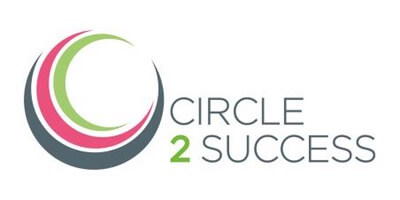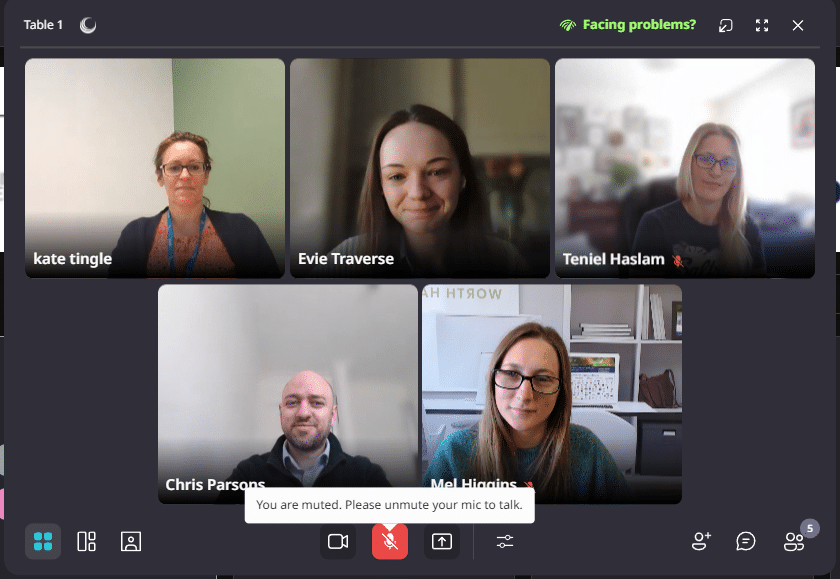In the wake of Covid, prioritising employee wellbeing has never been more crucial. So how can HR solve employees’ struggles, without a stress ball in sight?
In recent years, wellbeing and mental health has risen to the top of the agenda for the majority of organisations. The CIPD’s Health and Wellbeing at Work 2022 report, produced in partnership with Simplyhealth, found most organisations are taking additional wellbeing measures in response to the lasting impact of the pandemic, including a greater focus on mental health (81 per cent) and better support for people working from home (72 per cent).
The report also revealed, however, that leaders’ focus on wellbeing in general has – perhaps predictably, as Covid fades to some extent from most people’s memories – waned slightly. It found 70 per cent of those HR professionals surveyed felt employee wellbeing was on senior bosses’ agendas, which was down from 75 per cent the previous year. The proportion believing leaders encourage a focus on mental wellbeing through their actions fell from 48 to 42 per cent.
Yet there are of course plenty of challenges still remaining. From a spike in loneliness stemming from the switch to remote work, to lingering stigma around severe mental illness, here are nine of the biggest workplace issues – and expert suggestions on what to do about them.
1 Ignorant managers
It doesn’t matter how good a company’s policies on mental health are or how diligently HR teams work to create a supportive and inclusive culture, a wilfully ignorant or insensitive team leader can undermine it all. Be they a manager who drives employees to stress and burnout with their unreasonable expectations, or a supervisor who puts zero effort into creating a safe environment in which staff can share their mental health challenges, the impact of a poor manager on both culture and individuals can create a major headache for HR personnel.
Tricky as this might be to navigate, the only real solution is to start an open and honest conversation with the manager in question, says Thom Dennis, CEO of culture change and leadership specialists Serenity in Leadership. “The first thing to consider is if there is something you don’t know that may be influencing their behaviour. Can you create an opportunity to listen to the individual, a window through which a helpful and supportive intervention can be made? Holding the problematic manager to account is important, as is knowing that people are often unaware they are being offensive and are able to change their behaviour once it is flagged.”
Next, ask the manager to actively participate in a mental health initiative, Dennis suggests. But – and here’s the trick – seek out their thoughts on the success or otherwise of the project. This helps to build empathy and awareness, while also ensuring they still feel listened to, rather than simply lectured at. The bottom line, says Dennis, is to “understand the danger of doing nothing and check for systemic issues of this kind and a toxic culture”.
2 Work from home loneliness
There are plenty of upsides to the remote or hybrid work patterns that have now become the norm in many sectors, such as shorter commutes, greater flexibility and the capacity to hire from a talent pool that extends far beyond a 20-mile radius. But this also comes with new risks for mental health – including loneliness. This seems to particularly affect younger generations: in a survey of 2,000 UK and US consumers by Chargifi in 2021, an overwhelming 67 per cent of workers aged 18-34 said they had found it harder to make friends and maintain relationships with colleagues as a result of the switch, while 81 per cent of millennials and Gen Z-ers expressed real concern about the risk of loneliness in the long term.
Organisations need to acknowledge this and take proactive steps, says Sarah Coghlan, global director of men’s health promotion at Movember. This could include generating more opportunities for cross-functional teamwork, she says, as “bringing together people who wouldn’t usually work on the same projects can help promote new ideas and ways of thinking, and that benefits us both socially and professionally”.
And don’t think the obligatory Christmas party will cut it, either, Coghlan adds: “Having a wide variety of options for activities such as office sports teams, book clubs or gaming nights means everyone feels included and has the chance to take part in something they are genuinely interested in.”
3 Severe illness stigma
The UK has made significant strides when it comes to lifting the taboo on common mental health conditions, such as depression and anxiety. But there is still plenty of work for organisations to do when it comes to addressing the stigma that persists around less common and more severe mental illnesses, including schizophrenia, bipolar disorder and personality disorders. In fact, a 2021 survey by charity Rethink Mental Illness found that the vast majority (81 per cent) of people severely affected by mental illness still reported widespread discrimination, both inside and outside the workplace. Significantly, 61 per cent said this stigma had prevented them from applying for a job or promotion at work.
“The best thing [organisations] can do is to make sure they create an open culture where all staff feel able to talk about their mental health,” says Andrew Berrie, head of workplace wellbeing at mental health charity Mind. Plus, remain open minded and ditch any preconceived ideas about what support may help someone. “It’s best not to make assumptions about any colleague’s mental health or how it might affect their work, but instead ask how best you can support them with open, non-judgemental questions, and listen to their response.”
4 Overwork and burnout
The last couple of years have seen a significant spike in stress and burnout at work. And that’s in no small part thanks to the way in which remote work conditions can all too easily blur the boundaries between work and home. More than half of Brits say they’ve worked longer hours from home, according to a 2021 poll by Hays, with 25 per cent putting in an extra 10 hours a week on average. It’s no wonder then, that the same period has also seen a big uptick in stress, with two thirds (69 per cent) of remote workers suffering with symptoms of burnout, according to global recruitment platform Monster.
Organisational attempts to tackle this sort of problem can feel superficial, warns Phil Rimmer, head of HR at law firm Slater Heelis. Think lunchtime yoga sessions when in reality everyone is far too stressed and busy to attend. What’s needed instead are profound, structural changes to the way work is allocated and managed. “I don’t think organisations should feel the need to introduce a policy as such,” he says. “It is more about communication and setting boundaries.”
Senior leadership teams could set a clear example by articulating that they only expect responses to their own emails within work hours, for instance, or video conferences could be limited to a shorter window within the middle of the working day to prevent overspill. Each organisation will need to experiment with their own solutions – and accept the change will take time. “Three years on we are still adjusting both in our personal and professional lives, but one thing’s for sure: we need to be diligent and sensible,” sums up Rimmer.
5 Mass layoffs
Sweeping redundancies in the global tech sector have really highlighted the mental health minefield that can accompany layoffs. Who can forget the infamous Zoom call by Better.com CEO Vishal Garg in 2021 as he laid off some 900 people in a widely criticised monologue that saw the company forced to hire a crisis firm and seek to salvage its battered reputation? The incident was just one example of how poorly handled layoffs can spell huge damage for both organisations and the individuals affected.
Rather than cold and dispassionate videoconferences, any redundancies need to be carefully planned in advance and take a “direct, person-to-person, humane and supportive approach”, urges Dennis. The risk otherwise is that employees “feel discarded, anxious and resentful” and can suffer long-term effects on self esteem and confidence. “Discretion, privacy, dignity and respect should be at the heart of any redundancy,” he says. “Remember also that redundancy affects the entire team; people may feel anxious about their own job security or feel very negatively affected by the redundancy of a friend or colleague.”
6 Wellbeing washing
A decade ago, organisations may well have gotten away with nothing further than an annual ‘wellbeing week’ offering staff free smoothies and massages. But in 2023 superficial efforts won’t cut it. An October 2022 survey by Claro Wellbeing found that 35 per cent of companies are currently guilty of ‘wellbeing washing’. And while 71 per cent celebrate mental health awareness days, for example, only 36 per cent have their overall mental health support rated as good or outstanding by employees.
To start fleshing out policies and procedures, ask staff what mental health support is currently on offer, says Neil Seligman, founder of The Conscious Professional: “Ask a few employees at different levels this question and see if they know the answer. If they don’t, think about your internal comms and find out where the gap is. If there is nothing in place short of statutory musts, research affordable services that can provide at least some on-demand support. If you aren’t sure where to start, ask HR colleagues in slightly larger firms in your industry and see what they have.”
Plus, “look at your annual plan of wider business events”, he adds. “Which of those can be enhanced with a wellbeing session? Which offer opportunities to share the message about your new people-focused brand vision and values? Then, consider if you have budget for an additional series of targeted wellbeing learning sessions and bring in the best speakers, trainers and experts you can afford.”
7 Moral injury
Most people will be relatively familiar with the concept of burnout, but what about moral injury? Only coined as a term in the 1990s, it refers to the type of severe psychological stress that staff can face when they feel they’ve been ethically or morally compromised at work. Healthcare professionals faced morally injurious conditions during Covid, for example, thanks to a lack of PPE and impossible decisions around allocation of equipment such as ventilators. And while not a mental illness in itself, it can contribute to other mental health problems, such as PTSD and low morale.
“Moral injury is a feeling of being let down by those in charge, so we need to look for ways to educate senior managers about their impact, creating a culture of respect, providing support and resources for employees, and encouraging open dialogue about ethical issues,” says Dennis.
And while non-medical organisations may be less exposed to this risk, there’s still plenty of action that can be taken to ensure ethics and values are being lived up to. “Organise an offsite for the C-suite with experiences that highlight the negative and positive impacts of their behaviour,” Dennis suggests, or “carry out workshops on the company’s values, working on things like holding each other accountable and bringing maximum self-awareness”.
8 Substance abuse
Active addiction can create major challenges for HR professionals. And the issue is on the rise in the UK. A survey by recovery platform Recoverlution in July 2022 found that 38 per cent of people currently have or have previously had an addiction disorder or know someone in that situation. There are lots of reasons for this, says Recoverlution founder Daniel Fincham. Prevailing stigmas in the workplace around addiction being a personal choice can create a vicious cycle where organisations refuse to support staff. And home working can mean addictive habits more easily take hold, but are harder to spot. “This can mean that any personal substance abuse issues can bleed into and become part of an individual’s work habits,” says Fincham. “I was working during the peak of my addiction and mental health crisis, so I know firsthand how hard it can be to struggle personally while also doing a 9-5 job. Even when I was in recovery, I wasn’t aware of resources and support from workplaces.”
There’s no one-size-fits-all solution, he points out. “But HR managers should signpost resources employees can turn to in the face of addiction and, more generally, should hold wider conversations to forge a culture where individuals feel comfortable turning to their peers, line managers or HR department about any substance abuse issues, regardless of whether an individual is in the office or working from home.”
9 Trouble at home
While mental health can certainly take a hit at work, with conditions such as stress, anxiety and burnout often linked to tough working environments, it’s also true that a significant proportion of challenges stem from the personal rather than the professional. As with substance abuse, this can often create a difficult juggling act for HR teams when it comes to knowing when and how to offer appropriate support.
It’s important to ensure all managers and supervisors are equipped to identify signs of difficulty, wherever it’s stemming from, says Joe Gaunt, founder of wellbeing company hero: “This should provide them with the interpersonal and emotional capability to deal with the employee in a professional but empathetic way.”
Also, make sure there’s plenty of signposting in place to connect employees with helpful third-party organisations, such as domestic abuse charities. And finally, keep an accurate log of interactions to ensure a safe work environment for all. “An employee who’s a bit teary following a fall out with a partner is very different to someone who might be acting erratically, leaving early, starting late and being aggressive to team mates.”




